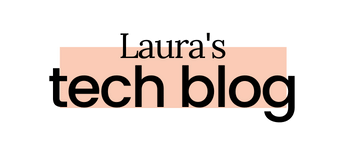Remember that “mind-blown” feeling when you realized that you can ask Siri to set a timer, and she actually does it? That’s me, but with AI in HR. Not too long ago, I was introduced to the magic of AI and its ability to change the HR game. The biggest win? The insane amount of time it saves us! So, I thought, why not share this magic? That’s why I created “AI Empowered” – your go-to for straightforward, no-jargon AI insights. Let’s dive into how AI is turning the HR world on its head, making things smoother and, maybe even, fun!
Alright, let’s dive into my beginner-friendly AI for HR guide. And keep an eye out for real-life examples at the end.
What We’ll Explore in This Post:
- The Magic of AI in HR
- Breaking It Down: What Exactly is AI?
- AI Dictionary: Terms Made Simple
- AI Over Google: What’s the Deal?
- Kickstart Your AI Journey
- Challenges & Concerns with AI
- Ready to Dive In?
The Magic of AI in HR
Imagine this: Within seconds, a pile of resumes gets screened or in-depth insights get automatically drawn from exit interviews. With AI, the mundane HR tasks get streamlined, letting us channel our energy into what truly defines HR – the human connection. Here are a few examples of how AI can help your HR team today:
- Quick resume screenings
- Instant exit interview analyses
- Speedy policy summaries
- Crafting precise job descriptions
- Designing onboarding checklists
AI isn’t about replacing us; it’s about empowering us to focus on the core HR values.
Breaking It Down: What Exactly is AI?
AI can feel daunting but don’t worry. You don’t need to be a software engineer to understand the basics. It’s like your smartphone: you know how to use it, even if you don’t understand all the technical stuff going on behind the scenes. In simple terms, AI is a computer program that’s designed to think and act like a human. It’s already embedded in our everyday lives, from Siri answering our questions to Netflix recommending our next binge-worthy series.
Here are two main types of AI that you often hear about:
Generative AI:
The artist of the AI world. It generates new things by learning patterns from data. That’s what’s happening when a chatbot drafts an email or composes a song.
Discriminative AI:
This type is more like a detective, finding patterns in the data it’s been trained on. It’s the reason your email app can filter out spam or social media platforms can identify faces in photos.
AI Dictionary: Terms Made Simple
No need to know every AI term, but understanding a few will come in handy. Here’s a simple guide to some common AI terms:
Chatbot:
This is a computer program designed to chat with humans in their natural language. These conversations can happen on various platforms like websites, messaging apps, or over the phone.
Iterative AI:
Think of this like perfecting a recipe. With each try, the AI adjusts based on feedback to get better and better. It’s all about learning from experience!
Prompt:
This is how you communicate with AI. When you ask or tell the AI something, you’re giving it a “prompt”. The better your prompt, the more accurate and helpful the AI’s response will be.
OpenAI:
The brainchild behind ChatGPT. They brought generative AI to the masses in 2022, making it mainstream and user-friendly.
ChatGPT:
This is the world’s leading chatbot, with over 100 million users. It’s a type of generative AI, which means it can answer your questions with human-like responses. This tool by OpenAI tops my list of favourite AI tools.
AI Over Google: What’s the Deal?
So, why should we pick AI over our reliable pal, Google? If you’re like me, being hit with 50,000 search results for ‘best employee engagement strategies’ can be overwhelming.
Enter ChatGPT. It’s like having a specialized HR consultant at your fingertips. While Google might give you countless articles and studies, ChatGPT gets to the heart of what you’re asking. Need a concise breakdown of a complex employment law? Or looking for innovative team-building activities? Just shoot a question to ChatGPT, and you’ll receive a focused answer in no time.
The bottom line? ChatGPT saves time. It cuts through the noise, delivering exactly what you’re looking for, right when you need it. And in the fast-paced world of HR, every saved minute is a win.
Kickstart Your AI Journey
1 | Sign Up for a Chatbot:
Diving into AI is simple, especially with chatbots to guide you. I’m a huge fan of OpenAI’s ChatGPT-4, but ChatGPT-3.5 is free and a fantastic place to start. Just visit the OpenAI Login Page to sign up. Once you’re logged in, the adventure begins!
2 | Start Chatting with AI:
With your account ready, you can start chatting with ChatGPT. Here’s a little pro tip: when you’re chatting with AI, remember to end your prompts with a question mark when you’re asking something. This helps the AI better understand and respond to your questions.
Here are some ways I used AI in my HR role this week. Use these examples as inspiration:
- Summarize Long Policies:
- Preparing for a company-wide presentation? Try asking ChatGPT to “Summarize this HR policy into 5 bullet points [paste policy].”
- Crafting Job Descriptions:
- Struggling with a job description? Your chatbot is ready to help. Try asking ChatGPT to “Help me write a job description for a backend development-focused Software Engineer role.”
- Interview Questions:
- In need of interview questions for a specific role? Try asking ChatGPT to “Give me some interview questions for a Junior Data Analyst role.”
- Clarifying Employment Laws:
- Unsure about certain employment laws? Try asking ChatGPT this question “Can you explain the main points of the Family and Medical Leave Act (FMLA)?”
- Creating Onboarding Checklists:
- A comprehensive onboarding checklist for new hires can be quick with AI. Try asking ChatGPT to “Create an onboarding checklist for a new software engineer in California.”
AI: Challenges & Concerns
Diving into the world of AI, like any new technology, can come with its share of concerns and challenges. Think back to the introduction of smartphones, and the initial worries about privacy and security. Now, it’s hard to imagine life without these devices. AI, and ChatGPT in particular, has its boundaries. For instance, its knowledge cut-off is as of 2021. There are also valid concerns about privacy and confidentiality, which we should address with caution. However, rest assured that as we progressively adopt this technology, we’ll navigate and understand these challenges better, just like we did with our smartphones.
Ready to Dive In?
Dive into the transformative world of AI and see firsthand how it can improve your HR processes. As you experiment and adapt, you might just find yourself wondering how you ever managed without it. I look forward to hearing about your AI experiences, adventures, or any questions you may have in the comments below. We’re all here to learn together!



